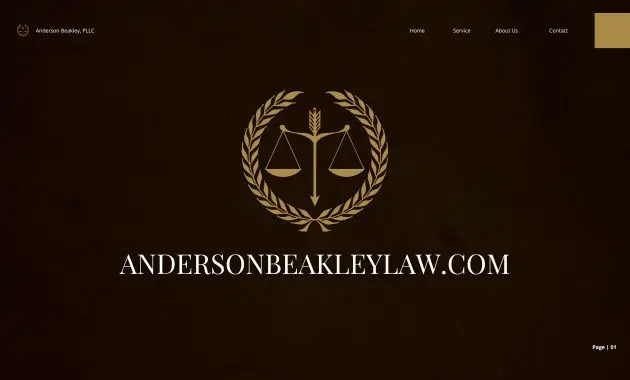Financial risk management law is the cornerstone of a stable financial system, ensuring the safety and security of investments and protecting individuals and businesses from financial turmoil. This intricate body of law governs how financial institutions manage risk, from market fluctuations to credit defaults, ensuring a balance between profitability and stability.
Understanding financial risk management law is crucial for anyone involved in the financial world, from individual investors to large corporations. It dictates the rules of the game, defining the boundaries of acceptable risk and outlining the consequences of failing to comply. This comprehensive guide delves into the principles, practices, and regulations that underpin this vital field, providing insights into the ever-evolving landscape of financial risk management.
Types of Financial Risks: Financial Risk Management Law

Financial risk is an inherent part of any financial activity. It refers to the possibility of loss or negative impact on an organization’s financial well-being due to various factors. Understanding the different types of financial risks is crucial for effective risk management, as it allows organizations to identify, assess, and mitigate potential threats.
Also Read
Market Risk, Financial risk management law
Market risk arises from fluctuations in market prices, such as interest rates, exchange rates, and commodity prices. It can affect the value of investments, the profitability of projects, and the overall financial performance of an organization.
- Interest Rate Risk: Changes in interest rates can impact the value of fixed-income securities, such as bonds. For example, if interest rates rise, the value of existing bonds with lower interest rates will decrease, leading to losses for investors.
- Currency Risk: Fluctuations in exchange rates can affect the value of assets and liabilities denominated in foreign currencies. For example, a company that imports goods from a country with a depreciating currency will experience an increase in its import costs.
- Commodity Price Risk: Changes in commodity prices, such as oil or gold, can impact the profitability of companies involved in the production or consumption of those commodities. For instance, an airline’s fuel costs will increase if oil prices rise.
Credit Risk
Credit risk is the possibility that a borrower will default on their debt obligations, leading to financial losses for the lender. This risk is particularly relevant for banks, financial institutions, and other entities that extend credit.
- Default Risk: The risk that a borrower will not repay their debt on time or in full. For example, a bank that extends a loan to a company with a poor credit history faces a higher default risk.
- Counterparty Risk: The risk that a counterparty in a financial transaction will not fulfill their obligations. For instance, if a company enters into a derivative contract with another company that defaults, it may lose money.
Liquidity Risk
Liquidity risk is the risk that an organization will be unable to meet its short-term financial obligations, such as paying its bills or meeting its payroll. This risk can arise from a lack of readily available cash or from difficulty in converting assets into cash quickly.
- Funding Liquidity Risk: The risk that an organization will not be able to obtain sufficient funding to meet its short-term needs. For example, a bank may face funding liquidity risk if its depositors withdraw a large amount of money.
- Market Liquidity Risk: The risk that an organization will not be able to sell its assets quickly and at a fair price. For instance, a company that owns illiquid assets, such as real estate, may face market liquidity risk if it needs to raise cash quickly.
Operational Risk
Operational risk is the risk of loss due to errors, fraud, or other failures in an organization’s internal processes, people, and systems. This risk can arise from various sources, such as human error, system failures, fraud, or legal and regulatory violations.
- Human Error: Mistakes made by employees can lead to financial losses. For example, a bank teller may accidentally overdraw a customer’s account.
- System Failure: Malfunctions in an organization’s computer systems or other infrastructure can disrupt operations and lead to financial losses. For instance, a power outage could cause a bank’s ATM network to go down.
- Fraud: Intentional acts of deception, such as embezzlement or identity theft, can result in significant financial losses. For example, a company may lose money due to a fraudulent invoice.
Risk Monitoring and Reporting

Financial risk management is an ongoing process that requires constant vigilance. Effective risk monitoring and reporting are crucial for identifying potential issues early on, allowing for timely intervention and mitigation. Continuous monitoring ensures that risks are kept under control and that the organization is prepared to manage unexpected events.
Importance of Continuous Risk Monitoring and Reporting
Continuous risk monitoring and reporting is essential for several reasons:
- Early Detection of Risks: Regular monitoring allows organizations to identify emerging risks before they escalate into significant problems. This proactive approach enables timely corrective actions and minimizes potential financial losses.
- Improved Risk Management Decision-Making: By providing insights into the effectiveness of existing risk management strategies, continuous monitoring helps organizations refine their approaches and allocate resources more efficiently. It also facilitates informed decision-making in response to changing market conditions or unforeseen circumstances.
- Enhanced Transparency and Accountability: Regular reporting provides stakeholders with a clear understanding of the organization’s risk profile and the effectiveness of its risk management efforts. This transparency fosters trust and accountability, ensuring that stakeholders are informed about potential risks and the actions being taken to manage them.
- Compliance with Regulations: Many regulatory bodies require financial institutions to monitor and report on their risk exposures. Continuous monitoring and reporting help organizations comply with these requirements, avoiding potential penalties and legal repercussions.
Key Risk Indicators (KRIs)
Key risk indicators (KRIs) are quantifiable metrics that provide insights into the likelihood and potential impact of specific risks. KRIs help organizations track their risk exposure and identify potential areas of concern.
- Credit Risk:
- Non-Performing Loan (NPL) Ratio: The percentage of loans that are past due or in default. A high NPL ratio indicates a higher risk of credit losses.
- Loan Loss Provision: The amount of money set aside to cover potential loan losses. A significant increase in the loan loss provision suggests an increase in credit risk.
- Credit Rating: The creditworthiness of borrowers, as assessed by credit rating agencies. A downgrade in credit rating indicates an increased risk of default.
- Market Risk:
- Volatility of Asset Prices: The degree of fluctuation in the prices of assets held by the organization. High volatility indicates a higher risk of market losses.
- Interest Rate Sensitivity: The extent to which the organization’s earnings are affected by changes in interest rates. A high sensitivity indicates a higher risk of interest rate losses.
- Currency Exchange Rate Fluctuations: The volatility of exchange rates between currencies in which the organization operates. Significant fluctuations can impact the value of foreign currency assets and liabilities.
- Operational Risk:
- Number of Operational Errors: The frequency of errors in internal processes, systems, or controls. A high number of errors suggests a higher risk of operational losses.
- Fraud Losses: The amount of money lost due to fraud or other criminal activities. A significant increase in fraud losses indicates a higher risk of operational risk.
- Compliance Violations: The number of instances where the organization fails to comply with relevant regulations or laws. A high number of compliance violations suggests a higher risk of regulatory penalties.
- Liquidity Risk:
- Cash Flow Coverage Ratio: The ratio of cash flow to debt payments. A low ratio indicates a higher risk of liquidity problems.
- Net Liquid Assets: The difference between liquid assets and short-term liabilities. A low net liquid asset position suggests a higher risk of liquidity problems.
- Days Sales Outstanding (DSO): The average number of days it takes to collect receivables. A high DSO indicates a higher risk of liquidity problems.
Best Practices for Developing Comprehensive Risk Reports
Comprehensive risk reports should provide a clear and concise overview of the organization’s risk profile and the effectiveness of its risk management efforts. Here are some best practices for developing such reports:
- Define Clear Objectives: Determine the purpose and audience of the report, and tailor the content accordingly. Consider the specific information needs of stakeholders and the level of detail required.
- Identify Key Risks: Clearly articulate the organization’s most significant risks, based on a thorough risk assessment process. Prioritize risks based on their likelihood and potential impact.
- Use Consistent Metrics: Employ consistent and quantifiable metrics to measure risk exposures and track progress over time. This ensures that the report is objective and provides a clear basis for comparison.
- Provide Context and Insights: Go beyond simply presenting data points. Offer context and insights into the underlying causes of risks and the effectiveness of risk management strategies. Explain trends, identify potential areas of concern, and highlight key learnings.
- Focus on Actionable Recommendations: Conclude the report with actionable recommendations for mitigating risks and improving risk management practices. These recommendations should be specific, measurable, achievable, relevant, and time-bound.
- Regular Reporting and Review: Establish a regular reporting schedule and ensure that the report is reviewed and updated periodically. This allows for continuous monitoring of risk exposures and the effectiveness of risk management efforts.
Navigating the complex world of financial risk management requires a deep understanding of the laws and regulations that govern it. By understanding the key principles, frameworks, and practices, individuals and businesses can mitigate risk, make informed decisions, and contribute to a more stable and secure financial ecosystem. As the financial landscape continues to evolve, staying abreast of emerging trends and adapting to new challenges will be essential for navigating the future of financial risk management.




